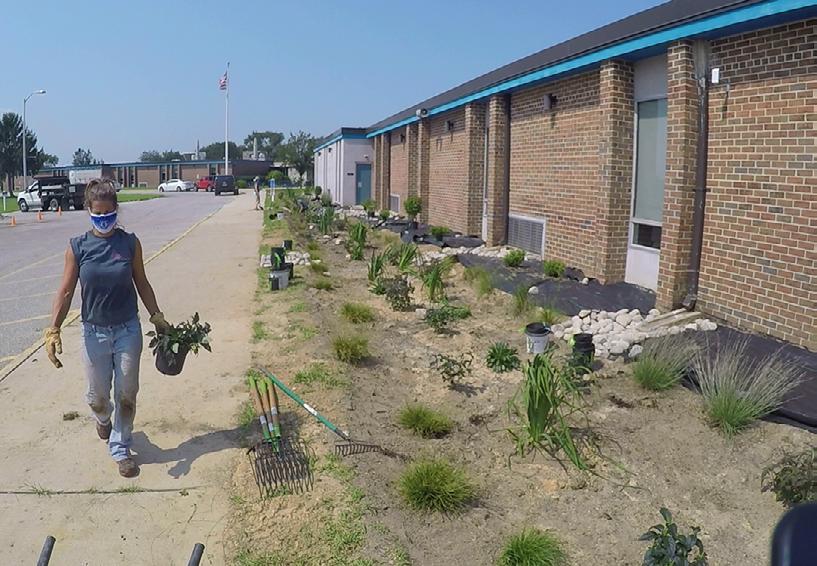
2 minute read
Salem High School Rain Garden Provides Beauty and Protection
“Into each life, some rain must fall”
—Henry Wadsworth Longfellow
Advertisement
Rain is essential to life on earth, but too much water leads to flooding, which washes pollution into rivers and streams. That’s when you need to take steps to implement, what is known in the water world, as best management practices.
In August, Partnership for the Delaware Estuary and a team from Rutgers University’s Cooperative Extension Water Resources Program engineered and installed a rain garden filled with native plants at Salem High School.

The new rain garden at Salem High School will help recharge the Kirkwood-Cohansey aquifer, the drinking water source to about a million people in southern New Jersey.
A rain garden is a shallow basin created to collect stormwater from roofs, parking lots, or other hard surfaces. This allows water to slowly soak into the ground rather thanrushing directly into nearby waterways like the Salem River. Sandy soils and water-loving plants planted in the garden take pollution out of the stormwater as it filters into the ground. Water that soaks into the Salem High School rain garden will help recharge the Kirkwood-Cohansey aquifer, the drinking water source to about a million people in southern New Jersey.
Salem High School’s rain garden came about as part of PDE’s work with the South Jersey Landscape Makeover Project, a collaborative effort between regional environmental nonprofits funded by the William Penn Foundation. The focus of this project is to bring green stormwater techniques to homeowners, municipalities, andschool districts throughout South Jersey.
Members of the Rutgers University team also worked directly with Salem High School students to teach them the role of rain gardens in the environment.
“The hope is that we build more rain gardens at the school over the years to come, and we can use them as educational tools with the students,” said Rutgers Water Resource Specialist Chris Obropta. “The whole idea is, we get the next generation thinking about stormwater management in a different way than the way their parents did.”
Theresa Durham, head of the science department at Salem High School, helped coordinate the school’s project. She and engineering teacher Paul Bartholomew helped install the garden. Bartholomew said topographical maps show that the school building has sunk over the years, but the rain garden will help the problem.
“For PDE, this is a really fantastic project to manage water quality and create new STEM (Science Technology Engineering and Math) opportunities for local students to study how humans and nature interact,” said PDE’s Collaborative Programs Manager Kate Hutelmyer. “Rain gardens like this one mimic the way nature would handle rainfall, which protects our streams and helps alleviate local flooding issues. It also helps put water back into the aquifer, which is a critical source of drinking water here in South Jersey. And because the aquifer is connected to the Delaware River, a healthy aquifer means a healthier Delaware River and Bay, which is really important to us.”
PDE gives a huge thanks to Rutgers and Salem High School for their work on the project and the William Penn Foundation and the National Fish and Wildlife Foundation for supporting this effort. Click here to see a video about this project.

Staff from PDE and Rutgers University's Cooperative Extension Water Resources program, and teachers from Salem High School pitched in to install the rain garden.





